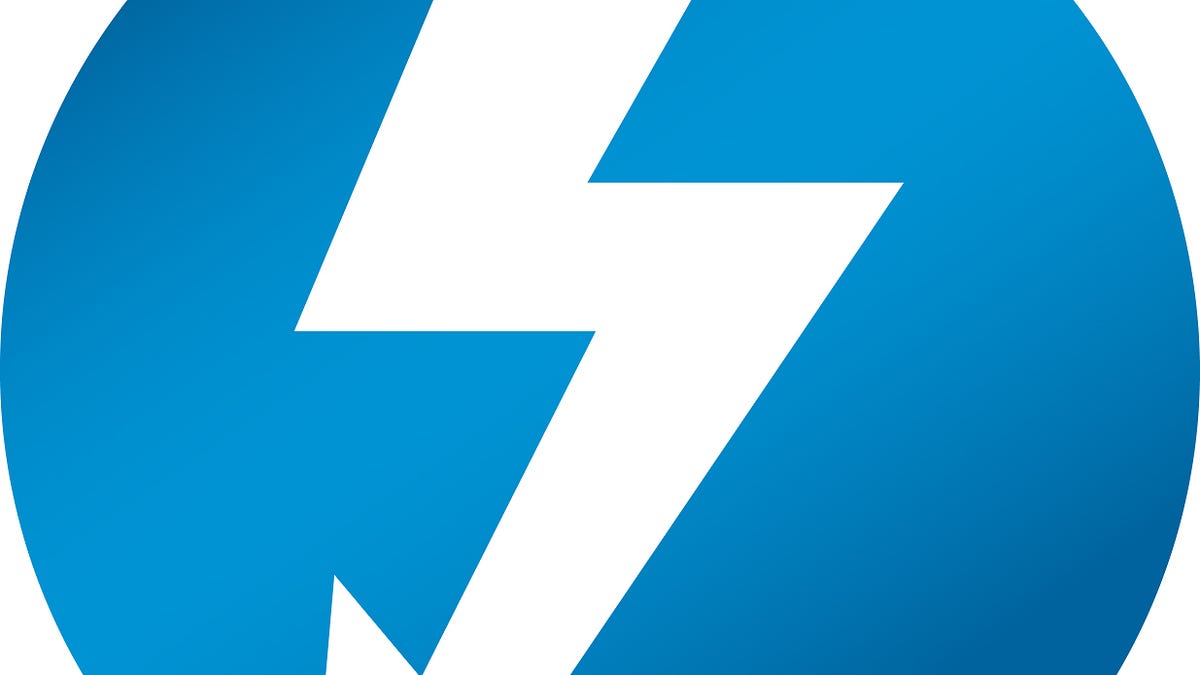Intel unveils Thunderbolt data transfer tech
The current copper-based generation of Thunderbolt, formerly known as Light Peak, boasts 10Gbps data transfer speeds between computers and attached devices.

Intel this morning outlined the specifics of its Thunderbolt data connection technology.
Formerly called Light Peak, the current copper-based generation of Thunderbolt boasts 10Gbps data transfer speeds between computers and devices--that is, twice the speed of current USB 3.0 throughput. Future iterations of the specification are expected to move from copper wire to a fiber-optic connection, which Intel has said could one day allow for throughput rates up to 100Gbps.
One of Intel's goals for Thunderbolt is to simplify the various connections going from PCs and connected devices. Thunderbolt can transmit both raw data and audio-video information simultaneously, using existing DisplayPort and PCI-Express data protocols. As each Thunderbolt port has two data transmission channels, the technology is also bidirectional, meaning that it can both transmit and receive data. According to Intel, each port will be able to send and receive data simultaneously, at full 10Gbps bandwidth in both directions.
By using the existing DisplayPort and PCI-Express data protocols, Thunderbolt will affect a wide number of peripheral devices, ranging from desktops and laptops, as well as monitors, external hard drives, cell phones, and tablets, among others. Apple's new MacBook Pro, also announced this morning, is the first Thunderbolt-equipped computer. Intel also announced that Aja, Apogee, Avid, Blackmagic, LaCie, Promise, and Western Digital will all have Thunderbolt-based products, although the technology is certain to spread to every major computer and peripheral vendor before long.
Intel will be hosting a formal press conference this morning at 10 a.m. PT/1 p.m. ET to announce Thunderbolt and demonstrate Thunderbolt-equipped products. CNET's Josh Lowensohn and Dong Ngo will be live-blogging the event, which you can follow at this link.

